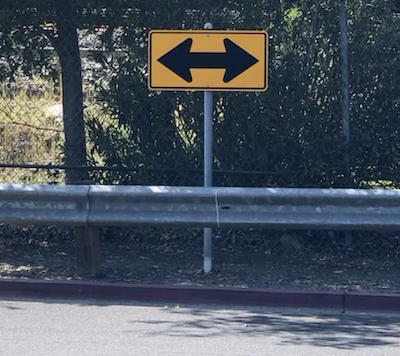The one that’s best is the one you actually do—overcoming decision paralysis
Last Wednesday, I found myself giving out one of my favorite pieces of advice for overcoming decision paralysis: “The one that’s best is the one you actually do.”
This was during a self-publishing class I was teaching to 40 or so professional coaches. One of the attendees asked about building her business platform: should she start with a book and then do a podcast, or start with a podcast and then write a book?
Either is a viable path. You can build platform with either, then leverage that audience when you launch the other.
My answer: Do the one you’re most excited about.
We’re all more likely to work on, and succeed at, things that excite us. After all, if there are two equal paths and you have the opportunity to choose, why wouldn’t you pick the one that excites you?
She said she really wanted to do a podcast.
I answered, “Then do a podcast.”
Why start with the one that feels like a chore? It will push back on you every day, and you may find yourself doing everything but write the book. It becomes a burden, not an inspiration.
The one that’s best is the one you actually do.
Intrinsic motivation is powerful, and we should always try to pay attention to it.
Yet we spend a surprising amount of energy trying to suppress or deny our intrinsic motivations, often for irrelevant or misguided reasons.

The roots of decision paralysis
Decision paralysis can often feel like being “stuck.” Getting unstuck is one of the things people turn to a professional coach for.
I’ve coached people through this at all ages, all stages of career, and all levels of education and professional success.
Sometimes, being stuck is due to not understanding all their options. Sometimes they don’t have all the information they need. Other times, they’re not clear on the consequences of every choice. Or they can’t separate their intrinsic motivations (desires) from external pressures (obligations).
And sometimes, of course, decision paralysis can be caused by fear. People are quick to jump to “fear of failure” as their big stumbling block. (Or “fear of success” if they are feeling particularly clever.)
Blaming fear, however, is too often just an easy way to avoid dealing with the true underlying root cause.
In my experience, decision paralysis often comes down to one of these five common root causes:*
1. Analysis paralysis
Analysis paralysis is the trap of feeling that you always need just a little more information before you can make the right decision. No matter how clear the answer is and how much consensus has been reached, you keep demanding more detail and keep asking more questions, even though you passed the point of diminishing returns long ago.
2. A competition of equals
When there is no clear “better” among two equal choices, it can feel impossible to find the tie-breaking insight that elevates one over the other. This often occurs when the two options are measured on completely different criteria. For example: you could move across the country for your dream job, or you could take a promotion in your boring job and stay near family. How can you choose when you can’t even compare?
3. The permanency fallacy
The wonderful thing about most decisions is that you can make a new one tomorrow. We tend to have an outsized sense of permanency to any big decision we’re trying to make. It’s like holding an index card in front of your eyes—this small thing seems huge because it obscures everything else, and we lose sight of the vast possibility the future holds. Certainly, there are decisions with profound and irreversible consequences, but those are more rare than we think.
4. Break from the herd
When it seems like the entire herd is turning left, it’s hard to be the one who turns right, no matter how strongly your heart is pulling you that direction. Whether it’s social pressure, self-doubt, or an inability to see all the options, taking the road less traveled seems like a much bigger risk than it might actually be. It can be far easier to abdicate your responsibility to yourself and just follow the crowd.

5. The anchor point
If you’ve got multiple big decisions to make at the same time, each one complicates the others. For example, one of my clients was trying to navigate three huge life decisions at once. Each time she began to settle on one, the complexity of the big picture derailed her and sent her back into a whirl of ambivalence. She needed an anchor point, so instead of trying to figure out the one best combination (an impossible task), she identified the one decision that was most important to her and let the other decisions flow from that.
Getting past decision paralysis
There are many tools you can use to help get past decision paralysis. Visualizing various futures, doing the 10-10-10 exercise, thinking through options that aren’t readily obvious, flipping a coin…
But if you’re stuck, the number one best thing you can do is bring someone in to help you get an outside perspective.
A trusted friend or mentor can give you their honest opinions.
A professional coach can help you see things in new ways and give you decision-making tools to help you find the path that’s right for you, at this time, within the full context of your life.
It’s not always possible to identify the objectively best decision when facing a big life choice. Best is, by its very nature, subjective. Friends, loved ones, relatives, and even colleagues all have their own ideas of what is best for you.
Those ideas are driven by their own fears, biases, and hopes. Their advice tends to be what they would choose, not necessarily what you should choose. Or, their advice is based on the outcome they want for you, not necessarily the outcome you want for you.
Even some coaches can send you in the wrong direction if they’re too closely tied to one particular methodology or too confident in their own knowledge and wisdom. Beware coaches who give answers rather than ask questions.
Because all of that can make decision paralysis worse rather than help you overcome it.
Even if you take their advice, it might direct you to the choice that you don’t really want, or which doesn’t fit you.
I could have told the woman in my self-publishing class that she should write a book. After all, I know all about publishing but I don’t know much about podcasting. And I sell assisted self-publishing services, so I could possibly earn her business.
And I’d have good reasons for that advice, too. It seems like everyone is doing a podcast. Podcasts can’t be handed out at conferences. You can’t become a “best selling author” with a podcast. You can’t mail a copy of your podcast to a client or prospect. Plus lots of others I could come up with.
But even all put together, those reasons don’t add up to enough to conquer the fact that the one that will be best for her is the one she would actually do.
I can help.
I work with top executives and middle managers to improve their leadership skills, their workplace culture, and the effectiveness of their teams. Also, I help individuals identify and achieve their personal goals. Would you like to become more aware, be more effective, be more empowered, and feel fully prepared for your next steps?
You can help.
Think of one person who would benefit from reading this post. Sharing is caring! Forward it to them right now. They will think you’re super smart and well informed.
Stay informed.
Be sure to join my email list! Get notified of new posts here as well as new courses, books, and events from me both here and at Gray Bear Publications.
* As always, I’m writing my post in plain language. The terms I’m using are phrases I use that I think illustrate the concept, not necessarily terms of art you’ll find in academic literature.



0 Comments